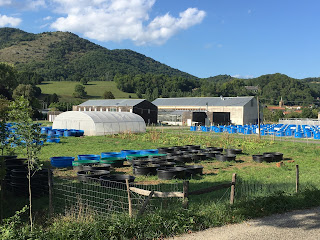Welcome to new lab members!
We welcome two new lab members for autumn 2021 - postdoc Morgane Bonade and PhD student Nic Strowbridge. Morgane is working on the project 'do common lizards break Dollo's Law' by reversing back to oviparity? This is a NERC funded project that tests functionally - using genetic crosses, RNAseq, and phylogeny - some hypotheses put forward in our phylogenomic reconstruction that suggested reversal (open access paper here in MPE ). Nic is an IAPETUS2 doctoral training programme student working on convergent evolution of colouration and toxicity defence in salamanders, in collaboration with Mike Ritchie at St Andrews.

